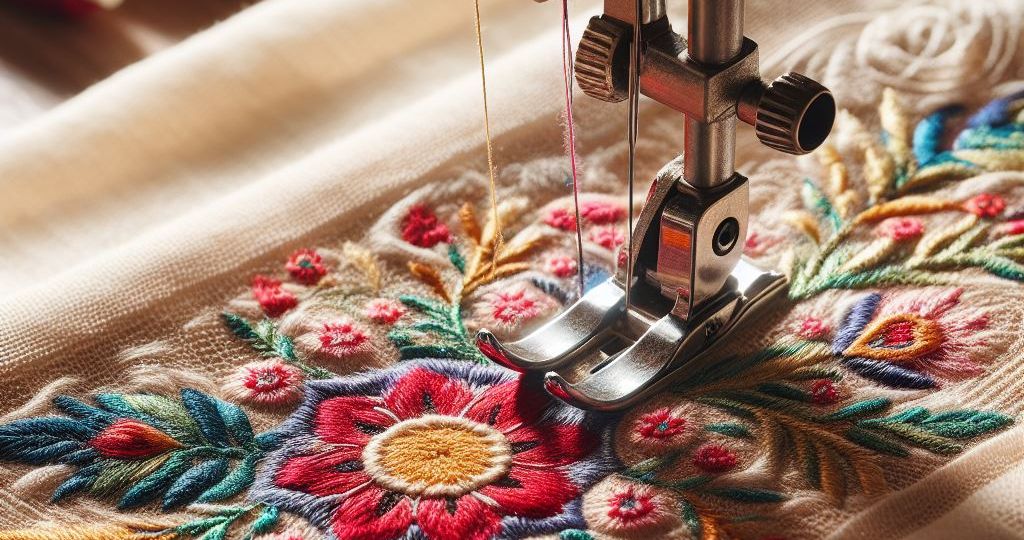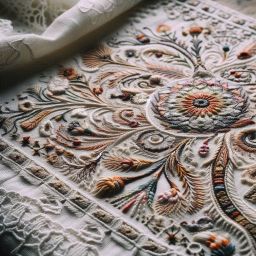
Embroidery is an age-old craft that has evolved into a sophisticated technique for adding intricate designs to fabric. From corporate uniforms to personalized gifts, embroidery offers a touch of elegance and durability that other methods can’t match.

This guide will delve into the many facets of embroidery services, explaining how they can enhance your apparel and why you should consider this method for your next project.
What is Embroidery?
Embroidery involves stitching a design onto fabric using a needle and thread. Modern embroidery machines can execute complex patterns with precision, making it ideal for logos, names, and decorative motifs.
Unlike printing, which applies ink to the surface of the fabric, embroidery integrates the design into the material, creating a textured and long-lasting embellishment.
Benefits of Embroidery
- Durability
- Embroidered designs are highly resistant to wear and tear, making them perfect for items that will undergo frequent use and washing, such as uniforms and sportswear.
- Professional Appearance
- Embroidery adds a sophisticated, high-quality look to any garment. It’s often preferred for corporate apparel because it conveys professionalism and attention to detail.
- Versatility
- Embroidery can be applied to a wide variety of fabrics and items, including shirts, hats, jackets, bags, and towels. This versatility makes it suitable for numerous applications, from casual wear to promotional products.
- Customization
- With a broad range of thread colors and the ability to create custom designs, embroidery allows for a high level of personalization. Whether you’re looking to add a company logo, a team emblem, or a unique design, embroidery can meet your needs.
Common Uses of Embroidery
- Corporate Apparel
- Embroidered logos on shirts, jackets, and hats are a staple for corporate uniforms, helping businesses present a cohesive and professional image.
- Sports Teams
- Team logos and player names are commonly embroidered on uniforms, providing a durable and stylish way to display team pride.
- Promotional Products
- Items like bags, caps, and towels with embroidered logos make excellent promotional giveaways, ensuring that the brand remains visible and memorable.
- Personal Gifts
- Personalized embroidered items such as monogrammed towels, robes, or baby blankets make thoughtful and unique gifts for special occasions.
The Embroidery Process
- Design Creation
- The process begins with creating a digital version of the design, known as a digitized file. This file instructs the embroidery machine on how to stitch the pattern.
- Material Selection
- Choosing the right fabric is crucial, as the material affects the final look and feel of the embroidery. Common choices include cotton, polyester, and blends, each offering different textures and strengths.
- Thread Selection
- High-quality threads in various colors are selected to match the design. Threads can be made from different materials, such as polyester, rayon, or cotton, each providing unique qualities.
- Stitching
- The embroidery machine stitches the design onto the fabric, following the digitized file’s instructions. Modern machines can handle multiple colors and complex patterns with high precision.
- Finishing
- Once the stitching is complete, the garment undergoes trimming and cleaning to remove any excess threads and ensure a polished appearance.
Choosing an Embroidery Service
When selecting an embroidery service, consider the following factors:
- Experience and Reputation
- Look for a service provider with a proven track record and positive reviews. Experience in handling various projects can indicate reliability and quality.
- Customization Options
- Ensure the service offers a wide range of customization options, including different thread colors, fabrics, and design capabilities.
- Technology and Equipment
- Modern embroidery machines and high-quality materials can significantly impact the final product’s quality. Check if the provider uses up-to-date equipment.
- Turnaround Time
- Depending on your needs, turnaround time can be a crucial factor. Discuss your timeline with the provider to ensure they can meet your deadlines.
- Pricing
- While cost shouldn’t be the sole deciding factor, it’s essential to get a clear understanding of the pricing structure. Some services may offer bulk discounts or package deals.
Conclusion
Embroidery services offer a timeless and elegant way to personalize apparel, making it ideal for corporate uniforms, sports teams, promotional items, and personal gifts. The durability, versatility, and professional appearance of embroidered designs make them a worthwhile investment. By understanding the process and choosing a reputable provider, you can ensure your embroidered items will stand out and make a lasting impression.
Whether you’re looking to enhance your brand’s visibility, create unique team apparel, or give a personalized gift, embroidery services provide the perfect solution for adding that special touch to your garments.


